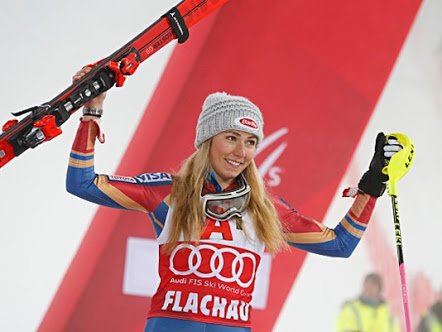How wearable technologies are helping Olympians. As Fitbits and some other wearable activity monitors change the way people exercise and track their activity, they are having similar effects on how Olympians train & recover between workouts.
It has long been common for coaches to use video cameras to show athletes what their form & movements look like, to track progress, in addition to fine-tune exactly the right technique for, say, taking off for a jump or landing after a particular kind of trick. But those do only show what is going on from the outside.
Today, wearables, biometrics & apps analyzing their data are becoming much common for athletes at all the levels, giving indications of what is going on inside the body of an athlete. Wearables are helping coaches, athletes & sport scientists in several sports including swimming, cycling, soccer & volleyball.
The most basic measurement of how hard body of an athlete is working is how fast his heart is beating; many of the wearable devices track their wearer’s heart rate in real time. Trainers could measure how fast an athlete’s heart beats during the maximum exertion in test on a treadmill or skating increasingly fast across rink.
Must Read: Eating fish improves intelligence and sleep quality, research proves
During workouts, a coach can determine that how hard the athlete is working by comparing his real-time heart rate to maximum. When a person’s heart beats almost as fast as it can, that is pushing nearly as hard as a person’s body can push. When athlete’s heart rate is closer to half of its maximum, the body is working at an intensity allowing the skater to recover from more demanding efforts. By tuning workout to keep the athlete’s heart rate in certain ranges for the certain periods, a coach or sport scientist could optimize both exertion & recovery time. That’s way, the body’s muscles & cardiovascular system are well trained and are in top form for competition.
Figure skaters and several snowboarders & skiers are among those whose competitive performances include jumps, means that they have to practice intensively for everyone. Those leaps, & their landings, exert enormous amounts of stress on athletes’ bodies (ranging from eight to 14 times person’s body weight for a brief moment). A 100-pound skater who jumps fifty times in a typical daily workout for five training days is loading 1,60 tons of cumulative weight on bones during that training week. The forces are absorbed by muscles & bones in the feet, legs, and the torso.
That is a lot of stress, and lot of potential for injury. In figure skating, for instance, 70 % of injuries are from overuse (primarily from accumulated effects of those impacts). Wearable monitors can track the range of jumps a person takes & measure the rotational, gravitational & other forces involved in the jumps and landings as well. These readings are helpful for coaches to ensure athletes develop strength & endurance while warning of potential for injury.
Sophisticated biosensors that are embedded in clothing, keep track of an athlete’s body temperature, movement & breathing rate and the other data, also helping coaches fine-tune workouts to optimize the performance.
Crucial elements of top performance of Olympians come while away from practice sessions –including when they are eating and sleeping. Athletes can use smartphone applications to record what they eat & when, tracking how many calories they take, alongside the amounts of nutrients like proteins, carbohydrates & fats.
Sleep-tracking devices do use accelerometers to track a person’s movements, and sometimes heart & breathing rates, while they are asleep. The data can reveal indicators of how well a person rested, such as how much he moved around in bed at night. That can help their coaches choose appropriate workouts depending on how tired an athlete already is.
The ConversationWearables make available these all data (about nutrition, exertion, stress forces, rest & recovery) that coaches & athletes alike can utilise to improve training, boost performance &, ideally, make it to the top of a medal podium.




